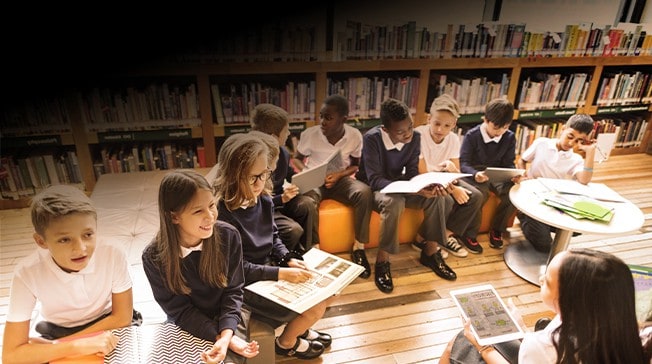Published by the Sydney Morning Herald, Monday 6 February
There is a big problem with student behaviour in the classrooms of Australia. But it is not the aggressive or even violent behaviour that occasionally attracts media headlines. More common, and more stressful for teachers, are minor disruptions such as students talking back, or students simply switching off and avoiding work.
As many as 40 per cent of Australia’s school students are unproductive in a given year. This matters: unproductive students are on average one to two years behind their peers.
About one in four of our students quietly disengage in the classroom. This matters, too: students who passively disengage perform just as badly as those who are disruptive or aggressive.
In our report, Engaging students: creating classrooms that improve learning, we bring together numerous studies over the past 10 years to paint a picture of what is going on behind the classroom door. It’s not pretty. We conclude that the problem of student disengagement is under-appreciated in many circles, and warrants much more public and policy attention.
Exactly why students disengage is complicated, of course. Some students bring problems at home into the classroom. The quality of teaching could be poor, or just not targeted at the right level for each student. But what the teacher does to create an effective learning environment is important, too – and this is one key issue we can start improving right away.
The teacher’s role as an effective front-line communicator is crucial and complex. They need to set expectations for their students, build a rapport, establish trust and routines so students are comfortable to participate and learn from their mistakes.
Advances in the science of learning over the past decade or so have shed light on the social, emotional and intellectual aspects of learning. Compelling content on its own is not enough. And old-fashioned discipline does not work either: at best it can make students compliant, but it can’t make them learn.
There is a clear body of knowledge on what teacher techniques in the classroom work best. But Australian teachers are not adequately trained in these techniques, nor given enough guidance on how to implement them in the heat of the moment. Only one-third of the practices promoted in textbooks and training courses for new teachers in Australia have been shown to work.
And once working in schools, teachers have limited opportunities to develop these skills throughout their careers. There are too few opportunities to watch expert teachers in action, or to get feedback on their own classroom techniques. As many as 40 per cent of teachers say they have never had the chance to watch colleagues perform in class.
Teachers are crying out for more guidance on classroom strategies, and these calls should not be ignored. Stressed teachers are more likely to respond badly when a student disengages. A poor response can distract other students and create a dangerous downward spiral.
Of course it is hard, with a group of 25 children or teenagers in a class, for a teacher to do the right thing in every circumstance. But too often, Australia’s teachers are left to try to work things out on their own.
This needs to change. Our report recommends an integrated approach to improve teachers’ classroom techniques. First, universities need to improve their teacher training courses. The focus must be on teaching classroom techniques that have been proven to work. And trainee teachers need more supervised time in a variety of classrooms, especially at the start of the school year when expectations and routines are set. The quality of courses is highly varied: some are excellent, but others need to improve substantively.
Second, schools need to give teachers more practical support. New teachers need to be able to see how an expert teacher gradually constructs an effective learning environment – and how they diffuse a heated situation. These skills can’t be learnt by reading a book or attending a seminar. Teachers need to learn how to put this nuanced skill set into action, and get feedback and guidance on their own performance in the classroom.
Third, governments and policy makers should direct more support to disadvantaged schools, where student engagement is weakest. More broadly, they should take the lead in gathering more information on precisely why so many of our students are disengaged. If there are deeper issues with the quality of teaching or the curriculum, we need to know. Only with better information can we successfully address student disengagement in the classroom.
In the meantime, we can do more on one critical part of the solution: creating classrooms that improve learning. Implementing these recommendations will help create a better learning environment in every Australian classroom, so that every student can be a step closer to reaching their learning potential.
